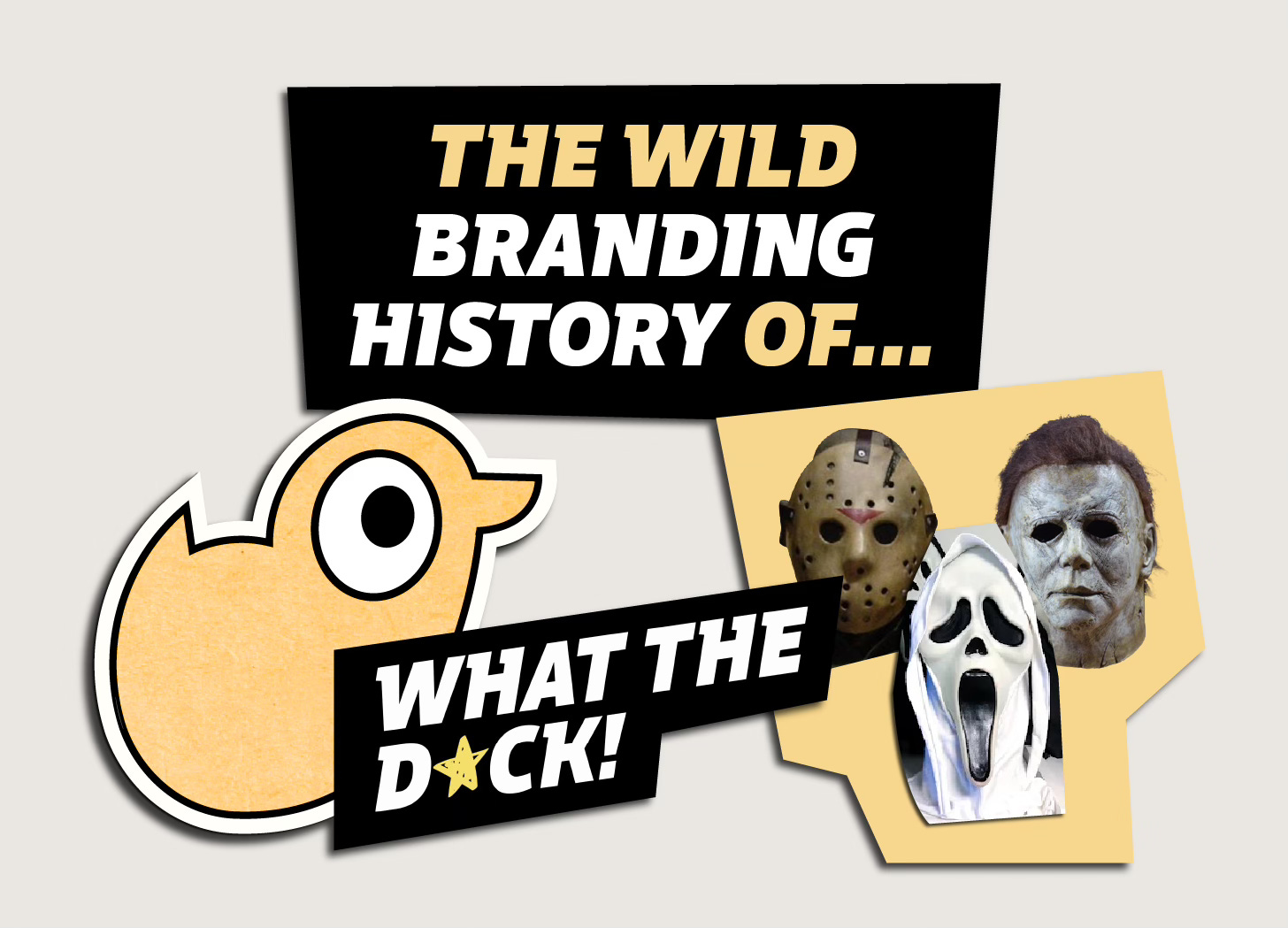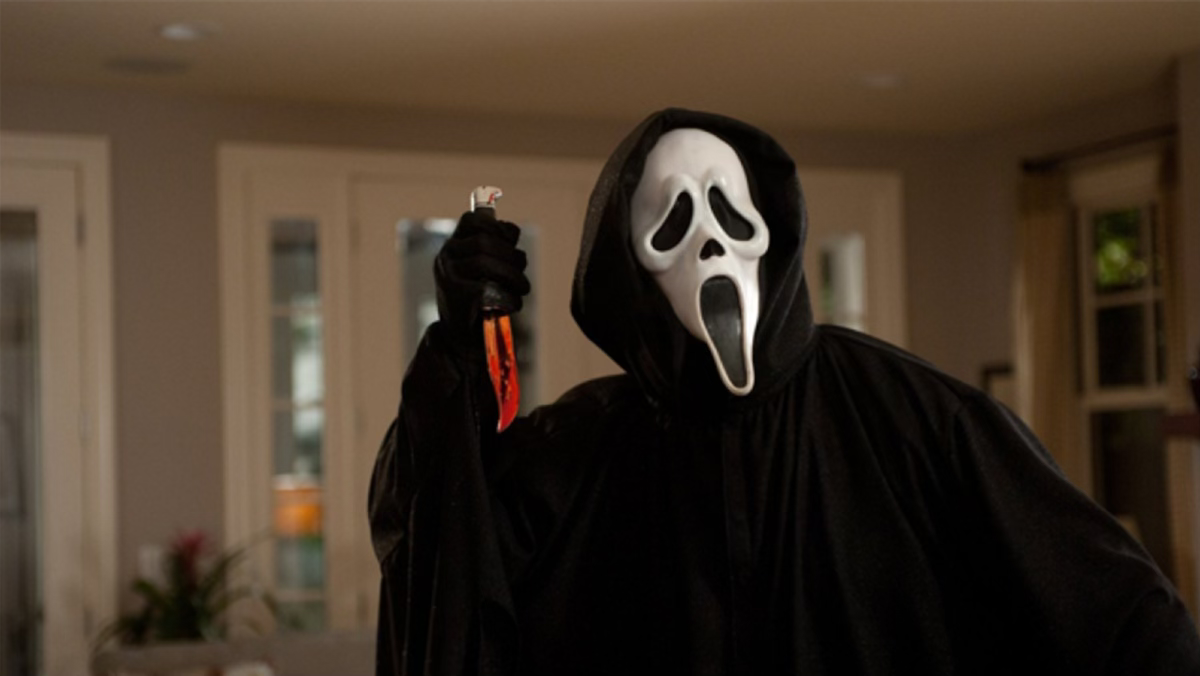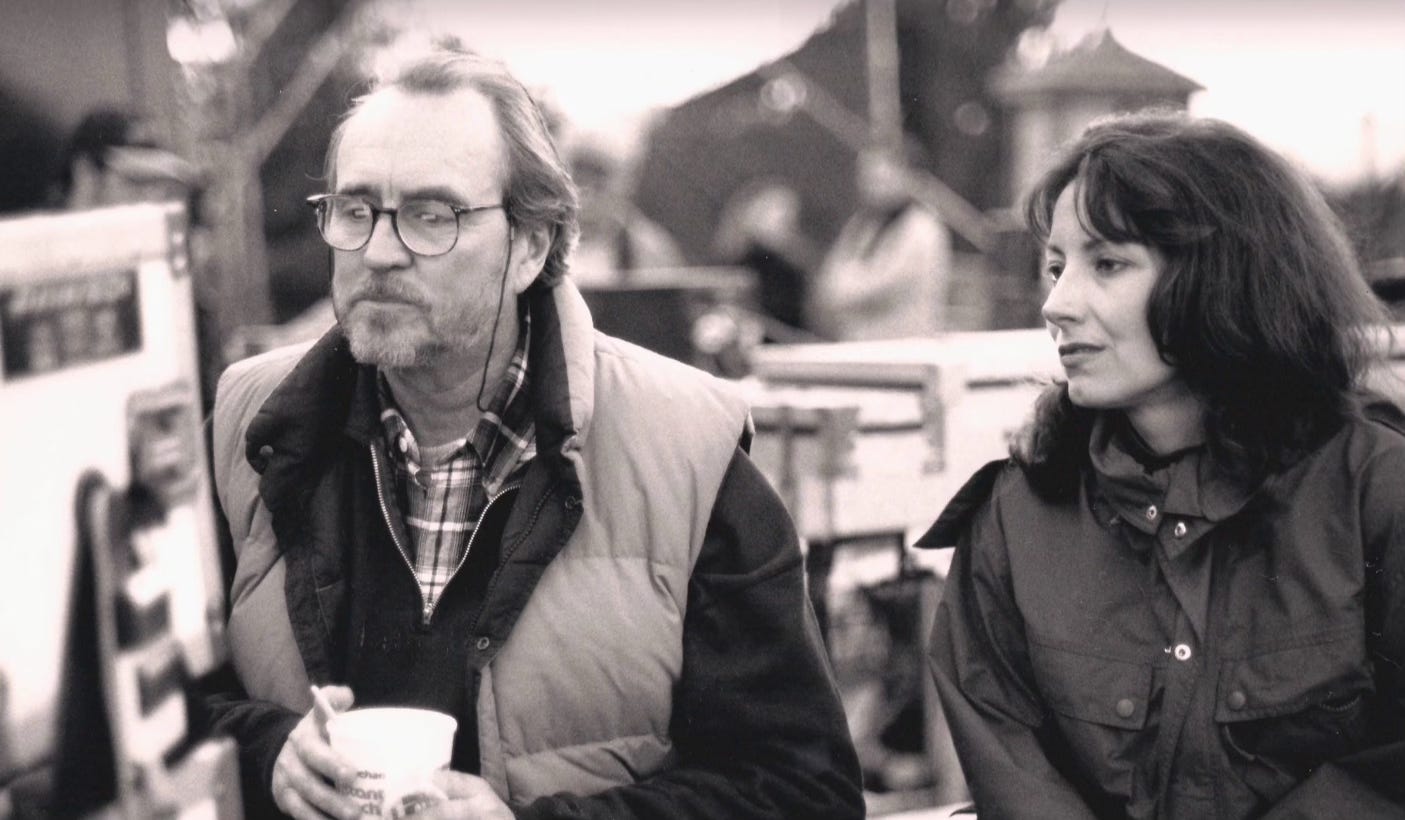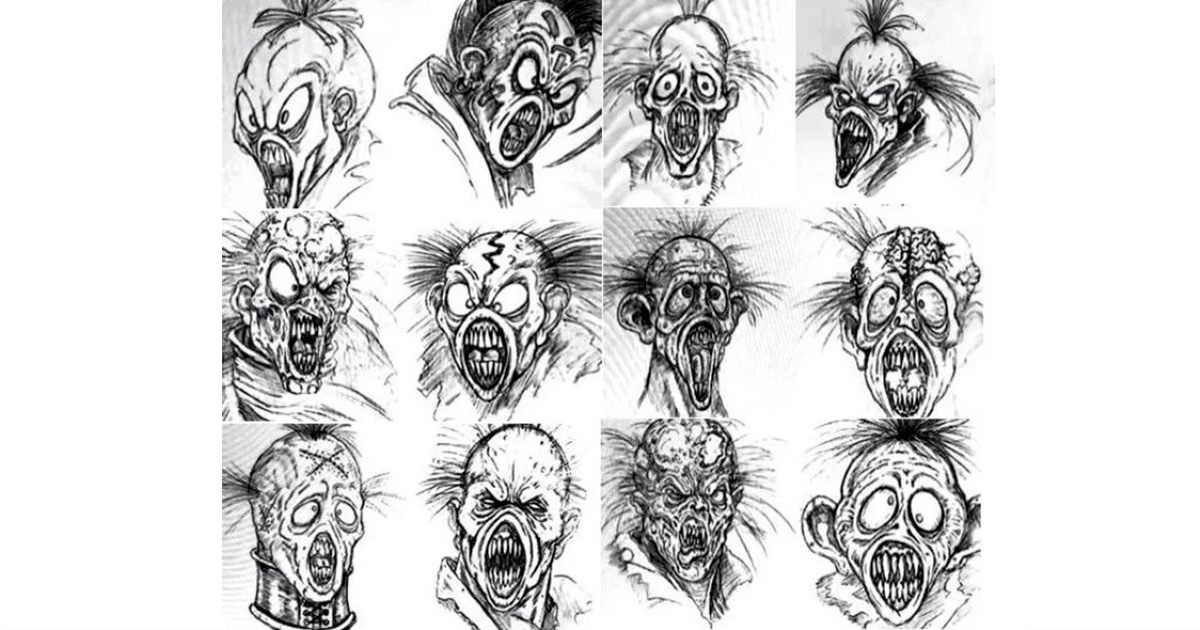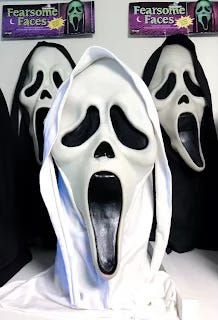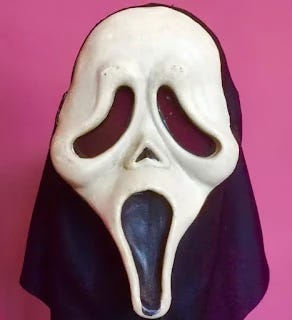The Wild Branding History Of: Horror Films
Explore the origin stories of distinctive brand assets in horror classics. No Spoilers!
*This article will be FREE until Halloween night, 2025.*
To access more What The Duck! articles and premium Branding Bullshit articles, you can upgrade to a paid plan for $6/mo or $60/year.
We know distinctive brand assets—logos, brand mascots, jingles, taglines, etc.—drive growth... in consumer brands. But I often think about how distinctiveness shows up outside of products and services.
Horror Classics vs. Christmas Classics
A few years ago, I analyzed how Christmas movies grow. I looked at the highest-grossing films (adjusted for inflation), opening weekend performance, and surveys of today’s most beloved holiday classics. A few patterns stood out:
Opening weekend predicted long-term success.
Critical acclaim barely mattered—Home Alone 2 has an abysmal Rotten Tomatoes score. For shame!
Star power helped enormously.
Sequels almost always performed well.
Box office flops often found new life as annual TV staples (A Christmas Story, It’s a Wonderful Life) during a time with far fewer options than today.
Most importantly, pre-existing fame and uniqueness drove success. Rudolph built on the popularity of the song, The Santa Clause leveraged perhaps the most famous and instantly recognizable “mascot” of all time—Santa—and other films drew on well-known characters from other genres, like the Muppets or Charlie Brown. The only truly original hit was Home Alone—even its producers were blindsided by its success on opening weekend.
In other words, Christmas movie success relied on:
Mental availability: pre-existing iconic characters, sequels, songs
Physical availability: marketing budgets, opening weekend sales, VHS/DVD distribution, and yearly TV reruns
In every film, distinctiveness played a critical role in its success, but ultimately, that distinctiveness was not built from scratch.
Horror films flip that logic. Their success rarely starts with familiarity—it starts with distinctiveness. The most famous franchises launched with something radically unique: a sound, a mask, or a memorable line.
Christmas films relied on distinctiveness, but it was inherited. Santa’s red suit, flying reindeer, Charlie Brown’s yellow-and-black shirt—all existed before the films. Horror had to invent its assets from scratch: masks, costumes, theme songs, and villains were born on screen.
Horror Classics vs. Consumer Brands
A great filmmaker knows how to captivate an audience; a great brander knows how to be remembered. Filmmakers often overlook the commercial power of distinctiveness, focusing instead on emotional impact. Branders frequently do the same—but without the same payoff. For filmmakers, emotion is the goal. For brands, it’s a means to an end. And audiences know the difference.
Viewers accept that films are meant to move them, even if they also make money. No one expects that from a brand. Brands don’t get two hours of attention—they get seconds. That’s why distinctiveness works differently in each world.
In branding, distinctiveness is much less an artistic choice and more a deliberate tool for recognition. A logo doesn’t need to make you feel something in the moment; it just needs to trigger everything you already feel toward the brand. The Apple logo doesn’t need to look innovative or inspire emotion on its own—if not for the brand built around it, it could just as easily belong to an elementary school.
Filmmaking is different. Its distinctive assets—like a mask or theme song—have to do something on their own. A Halloween mask has to be both scary and memorable. A score has to reinforce the emotion as it unfolds. But filmmakers could learn something from brand science, too. The most iconic movies, especially horror films, don’t rely on emotion alone—they build instantly recognizable cues that burn into memory. A mask, a sound, an iconic movie line. Deliberate distinctiveness doesn’t dull emotion—it anchors it, making sure the feeling lasts long after the credits roll.
Types of Distinctive Brand Assets In Film
This article isn’t about how Halloween movies grow, but how they were born—and how accidents of design became enduring assets. Horror films with unusual visual or audio traits were far more likely to become classics or evolve into franchises. Many of those traits were chosen on a whim, yet became inseparable from the films’ identity.
Just like consumer brands, horror films rely on recognizable cues to stay in memory. Their distinctive brand assets just take different forms:
Mascots → Costumes
Taglines → Famous movie lines and film taglines
Jingles → Theme songs
Advertising styles → visual motifs
Logos → Movie posters
Both films and brands rely on repetition and distinctiveness to anchor these cues in memory—the difference is in how those cues are created. Filmmakers often stumble into them, while brands try to engineer them.
I’d love to see more filmmakers take a page from marketing science and design their distinctiveness deliberately, rather than by accident.
But enough theory—let’s get to the real reason you clicked on this article: the backstories behind these iconic Halloween assets.
Brand Assets: Costumes
Brand mascots are known to be one of the most powerful assets for consumer brands. The same can definitely be said for the costumes that made horror classics famous.
Ghostface - Scream
In the Scream franchise, the killers target teens whose deaths follow the “unwritten rules” of classic horror movies—rules like never have sex, never drink or do drugs, and never say “I’ll be right back.” Each murder plays out as both a parody and a tribute to the slasher genre’s clichés, turning the film itself into a self-aware commentary on horror tropes.
“Ghostface” is the costume worn by various killers throughout the Scream franchise. Within the film, it had to be something any would-be killer could buy off the rack—ordinary enough to be believable, but eerie enough to stick in memory. That’s almost exactly how Marianne Maddalena, one of the film’s producers, discovered it in real life—though the story was far more accidental.
Three weeks before shooting, Wes Craven, Maddalena, and the rest of the Scream team were still struggling to design the mask that would become the star of the film.
Then, during a location scout, Maddalena stumbled upon it by accident—sitting on a chair in a boy’s bedroom in one of the houses they were considering for the shoot.1 It was the exact mask that would end up in the final film, though with a white shroud. She’d stumbled onto the “Wailing Ghost” mask, made by the costume company Fun World.
She ran downstairs to show the team, ecstatic. They weren’t impressed. “No, we’re going to make our own,” they replied. Somehow, no one seemed to grasp just how absurdly lucky it was—that the perfect mask they’d been struggling to create was simply sitting there, waiting, while they were out scouting for a house.
The team resisted the found mask for another couple of weeks, until Maddalena raised it again, hoping the homeowner still had it. Craven finally relented: “Ok… but I want to make some alterations.”
There was still one obstacle—the rights belonged to Fun World, the mask’s producer. Dimension executive Cary Granat initiated negotiations that same day. Meanwhile, the crew experimented with altered versions. When shooting began, they used a slightly modified mask, but soon realized the original worked best and went back to replace the shots with the Fun World version. By now, the rights to Ghostface must be worth millions. Scream only paid around $30,000 for them.
The rest of the costume was also a challenge. According to Maddalena, Craven was “not a happy camper” when he first read the script, which only described the killer as wearing a “ghostly white mask.” He worried: “How do you hide the feet? How do you hide the hands?”
The team experimented with a black turtleneck and other ideas before settling on a… white robe?
Once again, Maddalena provided the crucial suggestion, recommending a black robe for maximum scare factor—an idea that would stick.
Keep reading with a 7-day free trial
Subscribe to Branding Bullsh*t to keep reading this post and get 7 days of free access to the full post archives.



